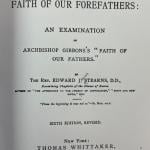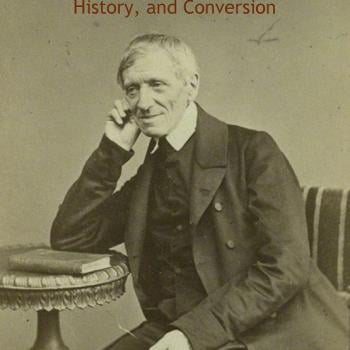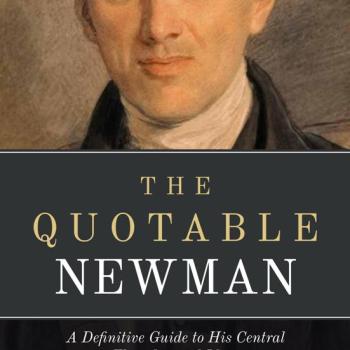“Yes, Virginia, There Was a St. Ignatius of Antioch”

This came about after his recent debate with Joe Heschmeyer regarding whether the Catholic Mass is propitiatory. During one of the cross-examination periods, Bishop “Dr.” [???] James White (see my large web page devoted to him and also my long 2013 book, Debating James White: Shocking Failures of the “Undefeatable” Anti-Catholic Champion) mentioned in passing that in contemporary scholarship, there is a movement that denies the historical existence of St. Ignatius of Antioch (d. c. 110).
NOTE: This view was not espoused by White; he merely mentioned that it is out there. Several folks have unfortunately distorted what he said [example one / example two]. I watched the entire debate. I believe, by the way, that it’s the only one of his oral debates that I’ve ever watched in its entirety, because his relentless sophistry drives me up the wall and I just don’t have the patience for it. I’ve been on the receiving end of it many times, believe me. I was “saved” by Joe’s superb performance. White stated at 1:48:56 in the transcript:
. . . if we have what Ignatius wrote Since I was [in] the seminary — and I’m not sure if you’re aware of this — over the past 25 years there has been a tremendous amount of scholarly skepticism expressed as to whether Ignatius even existed and which letters are actually [authentic] . . . it’s becoming the central view. I hope Ignatius existed and wrote the things we have . . . he may have written in 107-108. I hope he did but but maybe not, but what he’s addressing what’s very important whenever it was written, some people are saying it was 150 something like that.
White wrote on his blog on 3 March 2025, in an introduction to a Dividing Line episode devoted to the controversy:
I felt it was absolutely necessary to address the amazingly dishonest attacks that have been launched against me about a single cross-examination question from Saturday night’s debate. So we did a full dive into Ignatius, his writings, the issues with the transmission of those writings, forgeries, you name it, and then walked through the actual text cited in the debate demonstrating that the actual answer I gave was fully substantiated by the text itself. It is my hope that those who are planning to continue this campaign of misrepresentation will listen to this presentation, realize the foolishness of such an action, repent of their intentions, and cease and desist with their activities. That is up to them. (see also a post-debate clarification that White made on Twitter / X about his position regarding St. Ignatius).
Having defended the good bishop in this respect, I do, however, think it’s beyond strange and odd that he would even bring up such a thing during the debate. But having followed his antics and refuted him for now literally 30 years as of this very month, it doesn’t surprise me. A cynic might possibly opine — and perhaps accurately — that this was an obfuscatory tactic.
Moreover, White in a video today stated that Joe apologized to him for having stated in his closing statement that he denied St. Ignatius” existence. But Joe disputes this in a Facebook comment from 3-6-25: “When he says that I admitted to misrepresenting him and apologized for it, that’s just not true. Obviously. He’s not covering himself in glory here.” In fact, Joe had only asserted that “by the way, he did exist; he did write. We have his writings.” He never claimed that White himself denied his existence.
Now I’d like to cite someone who is an expert on St. Ignatius: Michael W. Holmes, the former Chair of the Department of Biblical and Theological Studies at Bethel University in St. Paul, Minnesota. He received an MA in New Testament from Trinity Evangelical Divinity School (1976), and a PhD from Princeton Theological Seminary (1984). He did his PhD work under Bruce Metzger, who was widely considered to be one of the most influential New Testament scholars of the 20th century. Holmes’ primary research areas are in New Testament textual criticism and the Apostolic Fathers.
He was previously on the faculty at Trinity Evangelical Divinity School and Princeton Theological Seminary, and has been visiting scholar at Luther Theological Seminary in St. Paul. He holds membership in the Studiorum Novi Testamenti Societas, the Society of Biblical Literature, the Institute for Biblical Research, and the North American Patristics Society. I will be citing his book, The Apostolic Fathers in English (Grand Rapids, Michigan: Baker Academic, 3rd edition, 2006). I have had the second edition from 1989 in my library for a long time, and read it in November 1994. Holmes writes in his introduction to St. Ignatius:
Everything said about Ignatius thus far rests upon the conclusion that the seven letters of the so-called middle recension are authentic. This conclusion is widely held today . . . The middle recension, which was known to Eusebius, preserves the original form of the letters. (p. 90)
Catholic scholars [in the 16th-17th centuries] generally defended the authenticity of the letters because of the obvious polemical value of Ignatius’s early emphasis on the monepiscopal form of church structure, while Protestants generally denied their authenticity for similar reasons.
A consensus of sorts in favor of the middle recension came to prevail following the publication of Pearson’s Vindiciae Ignatianae (1672), but . . . Not until the independent work of Theodor Zahn (1873), Adolf von Harnack (1878), and J. BV. Lightfoot (1885) was the authenticity of the seven letters of the middle recension generally recognized. So thorough and persuasive was the work especially of Zahn and Lightfoot that the great majority of scholars since their day have considered the matter of authenticity settled once and for all.
Three major challenges in the space of a decade in the late 1960s and 1970s — by Weijenborg and Joly, who questioned the authenticity of the entire corpus, and by Rius-Camps, who contended that three of the seven letters were forged and the rest interpolated and revised — did little to alter the consensus. The admitted difficulties that were noted and raised as a reason for reevaluating the documents were not new, and the proposed solutions seemed to raise more problems than they solved. (p. 91)
In the late 90s the question of authenticity was again raised. . . . scholars such as R. Hubner and T. Lechner claim that the letters betray a dependence upon the writings of Noetus of Smyrna and therefore must be forgeries composed no earlier than about AD 165-175 . . . their case for seeing them as later forgeries is unpersuasive . . . The traditional view, that the seven letters attributed to Ignatius are authentic, remains the most probable (and least problematic) solution to the question regarding authenticity. (pp. 91-92)
Related Reading
John Calvin: Ignatian Epistles (c. 110) Not Authentic [6-7-09]
Ignatius of Antioch (d. c. 117) vs. Sola Scriptura [12-21-21]
St. Ignatius & Eucharistic Real Presence (vs. Lucas Banzoli) [9-12-22]
St. Ignatius, Bishops, & the Rule of Faith (vs. T.F. Kauffman) [7-14-23]
Ignatius Of Antioch On Monarchical Bishops [1-25-24]
Revelation 2-3: Monarchical Bishops By 95 AD [2-2-24]
*
***
*
Photo credit: My own self-published book with self-designed cover (2nd revised edition, 2013) [see book and purchase information]
Summary: Reformed Baptist anti-Catholic apologist James White is falsely accused of denying St. Ignatius’ existence, but it was still silly of him to mention skeptical historians in a debate.













